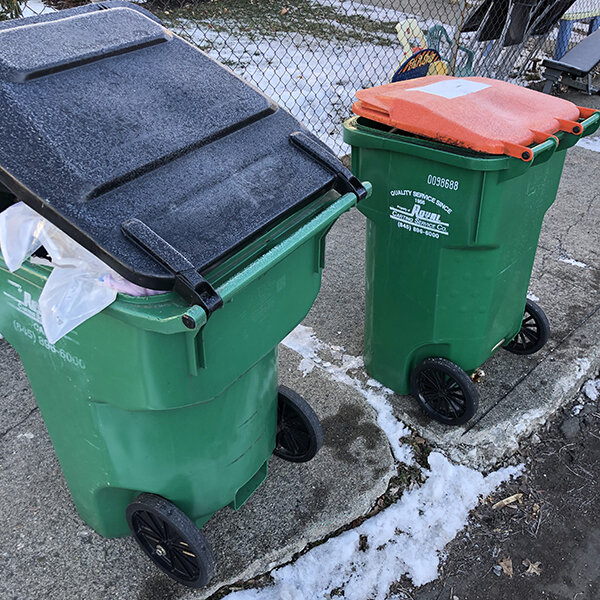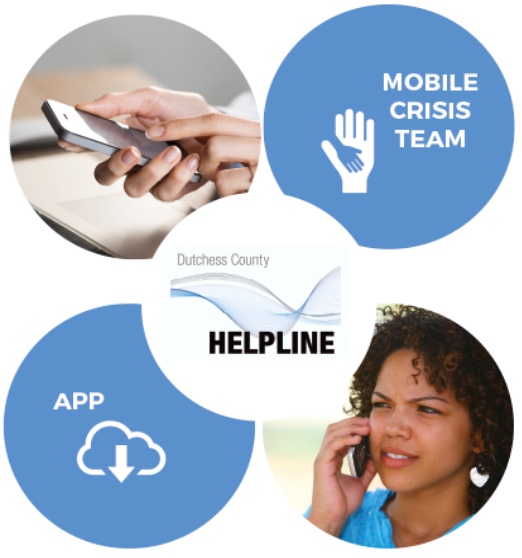China is not having a great time with this ban either. The thing is, Steve explained, China needed our recycled paper for pulp. They don't have their own pulp, and they need to buy it. According to Steve, China used to buy pulp for $220 a ton. After the ban, they bought it for $700 a ton.
“So where is the savings for China?” Councilperson George Mansfield asked.
“There is no savings," explained Steve. "It’s a disaster on the Chinese front for the capitalist side of China. From the government standpoint, they have an anti-pollution campaign they are running hard. We never thought they would go six to eight months without the material [pulp aka paper].”
Whether it be nonrecyclable materials (like diapers, garden hoses, and syringes) or simply recyclables that have too much food garbage on them (peanut butter jars and to-go containers are notorious for this), contamination has become an increasing - and increasingly costly - problem.
Since too much contamination, even with other types of recyclable materials (e.g. glass in the newspaper bale), renders materials essentially useless, recycling centers need to spend more and more resources sorting and cleaning everything that is dropped off. This involves buying or inventing more elaborate technology, as well as hiring people to pick through the recycling, remove inappropriate items, and clean debris off materials.
At the Beacon Republic Services facility, the mixed recyclables move through “a series of sorting tables, devices, magnets, opticals, and people” - over 50 people per shift - to end up separated by material and grade, explained Steve. Spending more on processing would not be a problem if there were increasingly profitable markets for the end products, but that is where some of the biggest changes are taking place. Because the profits have disappeared, processing centers may close altogether, thus eliminating those jobs. Already, one of the biggest processing centers in the country in Miami has closed "overnight," said Steve.
Worldwide Trend of Rejecting Dirty Recycling
The Chinese government’s main reason for banning foreign recyclables and lowering contamination limits was that the materials were coming in too highly contaminated and were creating an even bigger pollution problem for the country. Although American companies have responded by increasing their exports to other countries, primarily in Asia, some of these countries appear to be following China’s lead and may institute their own limits and bans.
Republic Services currently sells materials to Indonesia, Malaysia, and Vietnam, but the shipping costs to these countries are significantly higher than what it used to cost to ship to China. Trading with China also had the added benefit of forming a kind of shipping loop, where U.S. recyclables were shipped on containers to China, and Chinese manufacturers shipped finished goods back to the U.S.
An Opportunity For A U.S. Recycling Market? Maybe, But Risky…
Would the U.S. market develop to replace the work that China was doing? "We’d love to see it," said Steve. But investing in a new facility is a risk. What if China opens up again? "There have been two paper mills open in the last 10 years in North America. They are both in Indiana, and they are both cardboard manufacturers. They’re dead in the middle of the country because of the fear that [if] the export economy opens up again, they fear they won’t be able to compete again."
As for domestic markets, there is simply not enough demand for these kinds of production materials in the U.S., though that could change in the future. A strong need for something always inspires entrepreneurs to bring on the solutions. In the meantime, American recyclables are looking at other options.
Real-Life Effects At Home In Beacon
“We are at a crisis at this point,” said City Council member Amber Grant at the Workshop meeting. "The fact that we’re barely even recycling what we think we are, and now we have this issue on top of it which will now impact people's pocketbooks... We need to teach people how to recycle better and give them the tools to do it." Councilperson John Rembert voiced his agreement.
“The economics are critical,” Steve said. “The model is broken the way it’s written. The processors need to get a processing fee, and the commodity piece has to be a shared component of it."
It has only been two years since we last looked at the costs and benefits of recycling in Beacon, but we are a long way from the days when the City earned money from each ton of recyclables collected. That additional income is no longer part of the arrangement, and going forward, Republic Services will seek a new rate structure to cover the increased processing costs that are not made up for by selling the materials.
In addition to considering how processing facilities are paid, Steve and the City Council members discussed limiting the materials that can be thrown into the single-stream recycling bins. “We have to simplify what we put in there,” Steve said. “There are a lot of items that can be recycled, [but] they may not belong in the [recycle bin].”
The hope is that by collecting fewer items and emphasizing the need to clean and dry objects before throwing them in the bin, there will be less contamination and more usable material. This is not to say that everything else should be sent to the landfill, however. Steve suggested having drop-offs and other arrangements for other materials.
Addressing The Crisis At The New York State Level
At the New York State level earlier this month, Governor Andrew Cuomo directed the Department of Environmental Conservation to convene stakeholder meetings to identify how the state can improve recycling and even “expand municipal recycling programs” in the face of changing global markets. One goal of this initiative will be to identify open markets for recycled materials. The inaugural meeting was on August 29.
Suggestions to Save Recycling
People's behaviors will need to change if any trash is going to be reduced. Here are some suggestions:
Reuse the durable products that can have a second life right in your own home, like glass jars.
“When in doubt, throw it out,” said Steve. Ouch! Only throw in items that you know are accepted by your local facility. Even though we may want more goods to be recycled, this aspirational recycling only leads to higher contamination rates and more materials being sent to landfills.
Clean It: “Clean material is the answer,” said Steve. Thoroughly clean any food debris, laundry detergent, and other non-recyclable materials off containers. Consider switching to powder detergent in the cardboard box.
Cap It: “If a cap falls off a bottle, it’s residual [aka contamination]. If it’s on the bottle, it’s great.” Screw lids onto plastic bottles before throwing them in.
Glass Bottles - Skip the Bin: If you want to give your glass bottles a better chance at being turned into new bottles, put them in the specialized bottle deposit machines that sort them, crush them, and keep them free of contamination.
Food Composting - For Real! 40% Reduction in Trash: Aside from smarter recycling, Atticus Lanigan, owner of Zero To Go, an education-based waste management company focused on composting and recycling in Beacon, also suggests taking a hard look at the other types of waste we routinely throw away. “40 percent of our waste is organic and rots in landfills,” she said, even though much of it can easily be composted. “People really need to have it sink in that recycling is really just a Band-Aid at this point… The reality is that a lot of it doesn’t end up being recycled. People will throw everything they think of in recycling that might work, and it becomes dead weight for the company that processes it.”































































